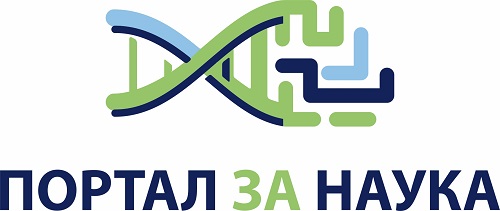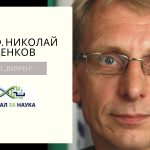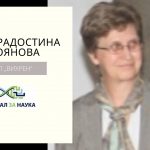Professor Lyudmil Katsarkov
Lyudmil Katsarkov is a full professor at University of Miami, University of Vienna and Institute of Mathematics and Informatics at Bulgarian Academy of Sciences. He is co-director of Institute of Mathematical Sciences of America (IMSA) and scientific director of International Centre for Mathematical Sciences – Sofia (ICMS – Sofia).
Prof. Katsarkov is an algebraic geometricist known for his fundamental contribution to the topological study of Kahler’s spaces, Hodge theory, and mirror symmetry. He introduced the non-abelian approach to Hodge theory into Shafarevich’s hypothesis of uniformity and proved this assumption of smooth projective varieties with almost insignificant fundamental groups. Later on, Prof. Katsarkov proved, together with Eyssidieux, Pantev and Ramachandran, the hypothesis of smooth projective varieties with practically linear fundamental groups. He has also performed important fundamental work on symplectic topology – he constructed, in cooperation with collaborators, symplectic Lefschetz fibrations with arbitrary fundamental groups and developed, together with Arux and Donaldson, Lefchetz’s theory on symplectic manifolds. Since several years, Prof. Katsarkov has been a leader in the study of mirror symmetry. He proved, together with Aruru and Orlov, the typology of homologous mirror symmetry for a number of toric surfaces and their non-commutative deformations. Moreover, Prof. Katsarkov studied homologous mirror symmetry for a variety of common type in a series of documents, in cooperation with Kapustin, Orlov, Gross, and Ruddat. Another major area of Katsarkov’s research was his work with Kontsevich and Pantev, which developed noncommutative geometry, noncommutative Hodge theory, and noncommutative robust approach to mirror symmetry.
Prof. Katsarkov has organised more than 30 conferences, schools and workshops and has mentored and attracted many young people to conduct research in geometry, symplectic topology and mirror symmetry.
Prof. Katsarkov is a leading researcher of a project funded by National Research Programme VIHREN. Below is a brief description of the project.
Reinforcement learning to control quantum matter out of equilibrium
 The ability to manipulate quantum matter in equilibrium is a fundamental achievement of 20th century physics. The main objective of modern physics is to extend this knowledge so as to cover systems out of equilibrium. Being at the border of equilibrium and non-equilibrium, the periodically driven (“Flockè”) systems are particularly suitable for this purpose. Based on the periodic drives, experiments with ultracold atoms may reproduce such phenomena currently unavailable in conventional materials, such as artificial calibration fields or topological and dynamically localised matter. Our knowledge of how to manipulate systems exposed to intensive periodic drives is at an early stage, especially with regard to highly interacting systems. We propose to overcome current limitations by combining artificial intelligence algorithms with ideas taken from statistical physics and quantum control. We will develop a new theoretical framework for non-adiabatic control of the quantum state of many bodies subjected to strong periodic drives, which is used as the basis for optimal scrambling, weaving, heating and cooling of quantum states. Understanding the dynamic properties of multi-body systems will improve the state-of-the-art techniques to manipulate cold atoms, optically trapped ions, superconducting qubits, and quantum solids. The quantum control toolkit we will be accompanied by reinforcement learning – one of the most promising techniques in the field of artificial intelligence. Deep reinforcement learning is extremely suitable to manipulate non-equilibrium states, since it is able to identify effective macroscopic degrees of freedom, even when solutions on microscopic equations of motion are not available. The discovery of physical principles of non-equilibrium control has the potential to reveal new relationships between quantum dynamics, statistical mechanics, optimal control, and machine learning. Our proposal establishes a roadmap for creation of future materials and technologies based on non-equilibrium processes in condensed matter physics, quantum optics and quantum calculations.
The ability to manipulate quantum matter in equilibrium is a fundamental achievement of 20th century physics. The main objective of modern physics is to extend this knowledge so as to cover systems out of equilibrium. Being at the border of equilibrium and non-equilibrium, the periodically driven (“Flockè”) systems are particularly suitable for this purpose. Based on the periodic drives, experiments with ultracold atoms may reproduce such phenomena currently unavailable in conventional materials, such as artificial calibration fields or topological and dynamically localised matter. Our knowledge of how to manipulate systems exposed to intensive periodic drives is at an early stage, especially with regard to highly interacting systems. We propose to overcome current limitations by combining artificial intelligence algorithms with ideas taken from statistical physics and quantum control. We will develop a new theoretical framework for non-adiabatic control of the quantum state of many bodies subjected to strong periodic drives, which is used as the basis for optimal scrambling, weaving, heating and cooling of quantum states. Understanding the dynamic properties of multi-body systems will improve the state-of-the-art techniques to manipulate cold atoms, optically trapped ions, superconducting qubits, and quantum solids. The quantum control toolkit we will be accompanied by reinforcement learning – one of the most promising techniques in the field of artificial intelligence. Deep reinforcement learning is extremely suitable to manipulate non-equilibrium states, since it is able to identify effective macroscopic degrees of freedom, even when solutions on microscopic equations of motion are not available. The discovery of physical principles of non-equilibrium control has the potential to reveal new relationships between quantum dynamics, statistical mechanics, optimal control, and machine learning. Our proposal establishes a roadmap for creation of future materials and technologies based on non-equilibrium processes in condensed matter physics, quantum optics and quantum calculations.

 Previous Post
Previous Post Next Post
Next Post